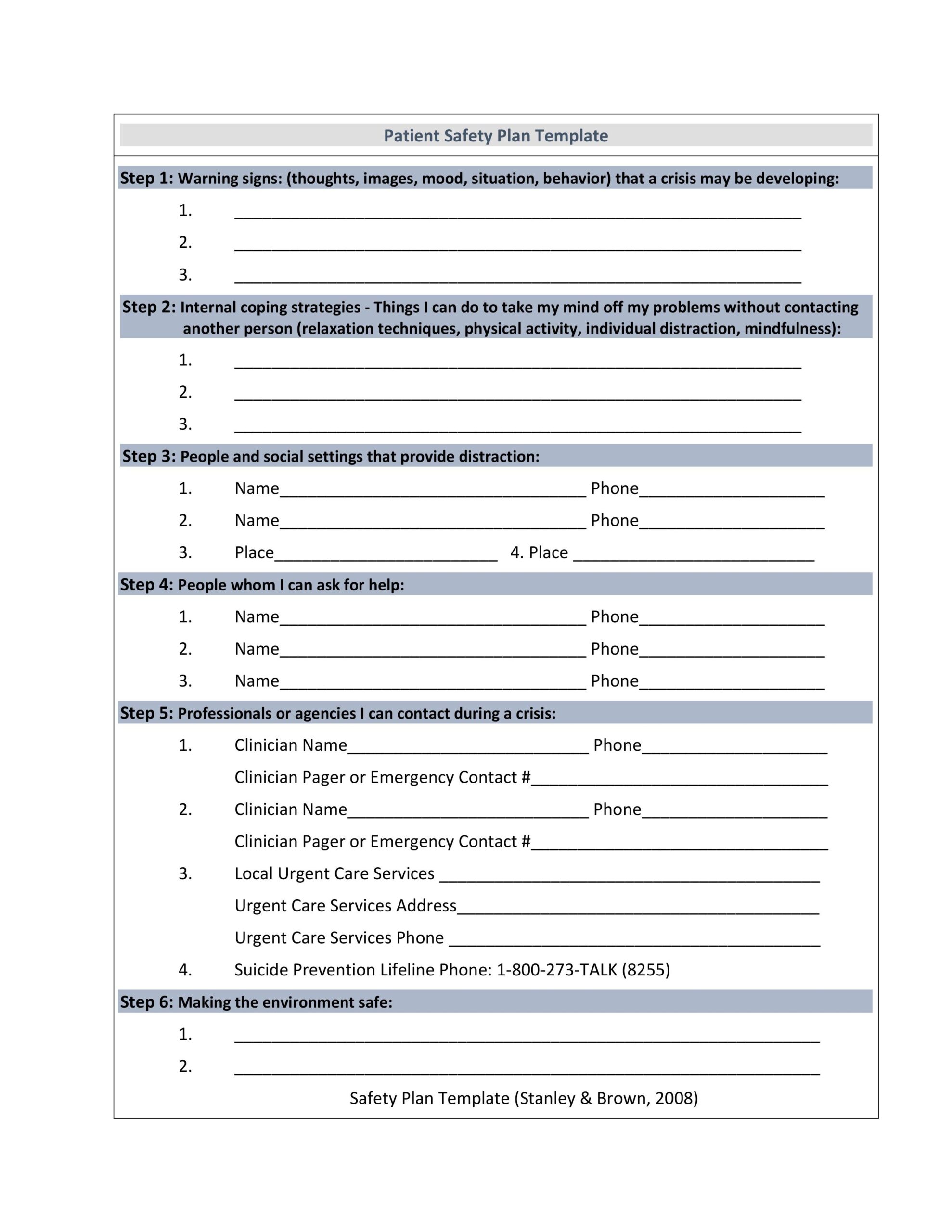When someone is experiencing thoughts of suicide, it is important to have a safety plan in place to help prevent them from acting on those thoughts. A suicidal safety plan template can provide a structured approach to managing these feelings and seeking support when needed.
Creating a safety plan can be a proactive step in managing suicidal thoughts and can help individuals feel more in control of their emotions. By having a plan in place, individuals can identify triggers, warning signs, and coping strategies to use when they are feeling overwhelmed and at risk of harming themselves.
Sample Suicidal Safety Plan Template:
1. Warning Signs: List specific thoughts, feelings, and behaviors that indicate you are at risk of suicidal thoughts or actions.
2. Coping Strategies: Identify healthy coping mechanisms such as calling a friend, going for a walk, or practicing deep breathing exercises.
3. Support System: Write down the names and contact information of trusted individuals you can reach out to for help, such as a therapist, family member, or crisis hotline.
4. Professional Help: Include information about mental health resources, such as therapy options, support groups, or emergency services, that you can access in times of crisis.
5. Emergency Plan: In case of immediate danger, have a plan in place to ensure your safety, such as calling 911 or going to the nearest emergency room.
By following a structured safety plan, individuals can take proactive steps to manage their mental health and seek help when needed. It is important to regularly review and update the plan as needed to ensure it remains relevant and effective in times of crisis.
In conclusion, having a suicidal safety plan template can provide individuals with a roadmap for managing their mental health and seeking support when experiencing thoughts of suicide. By identifying warning signs, coping strategies, support systems, and emergency plans, individuals can feel more empowered to navigate difficult emotions and stay safe during times of crisis.
